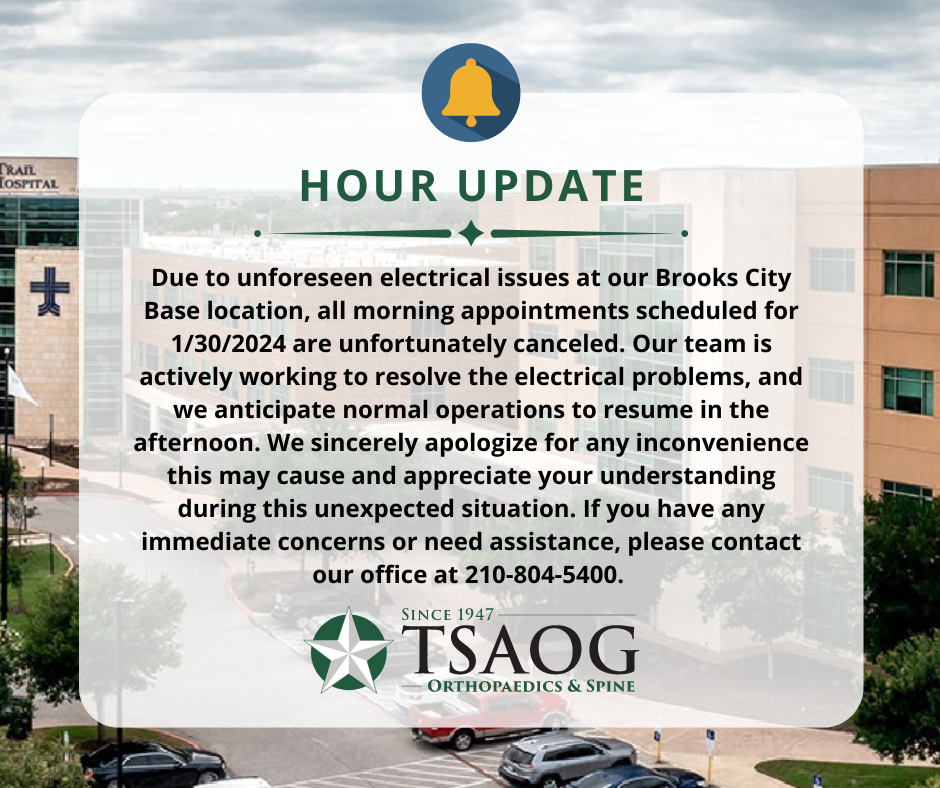Hip
Replacement Center
Home » Services » Joint Replacement Center » Hip Replacement
When To Consider Hip Replacement
It may be time for you to consider a total hip replacement if:
- You have intense hip or groin pain that keeps you awake at night or wakes you up.
- You have hip pain that limits your daily activities, like walking, climbing stairs, or going to work.
- You have hip pain that causes you difficulty getting in and out of chairs.
- You have tried conservative treatment options for hip pain with no success.
What is Hip Replacement
When the articular cartilage surrounding the ball and socket of your hip joint (where the femur meets the pelvis) is damaged beyond repair, most often due to osteoarthritis (or degenerative joint disease), hip replacement surgery seeks to remove the damaged portion of the hip and replace it with an artificial component.
Total Hip Replacement
A total hip replacement (or total hip arthroplasty) involves six main steps:
- Preparation of the Hip Socket – The damaged cartilage, as well as a small amount of the bone, is removed from the hip socket (acetabulum) and the new surface is shaped to fit the designated implant.
- Preparation of the Femur – The ball at the end of the femur, along with the damaged cartilage, is removed and the hollow center of the femur is reamed to fit the designated femoral stem implant.
- Positioning of Hip Socket Implant – A cup-shaped metal implant is positioned in the hip socket. It can be secured with screws or press-fit into place.
- Positioning of Femoral Stem Implant – A metal stem is inserted into the femur bone to a depth of around 6 inches. It can be cemented or press-fit into place.
- Positioning of Femoral Head – A metal or ceramic ball is positioned on top of the femoral stem, taking the place of the damaged end of the femur, which was removed.
- Spacing – A plastic spacer is inserted into the hip socket implant, creating a smooth surface for gliding (acting in place of cartilage for the artificial hip).
Approaches to Hip Replacement
The 3 most common approaches are as follows:
- Posterior Approach – Posterior approach (also known as the Moore or Southern approach) is the most traditional approach to hip replacement. It involves an incision from the back of the hip joint.
- Anterolateral Approach – Anterolateral approach (also known as the Watson-Jones approach) involves accessing the hip from the side.
- Anterior Approach – Anterior approach (also known as the Smith-Petersen approach or Direct Anterior Approach (DAA)) involves accessing the hip from the front.
What to Expect After Surgery
- Most patients will stay 2-4 days in the hospital and then begin physical therapy (either with a physical therapist coming to their home or in outpatient physical therapy sessions). Physical therapy progresses from walking with a walker to walking with a cane over the course of 2-3 weeks. Post-operative pain management will be provided through medication and/or injections, but most patients are pain free 2-3 weeks after surgery.
- After hip replacement surgery, you can reasonably expect to return to work in an office setting within 2-3 weeks, routine activities like driving within a month, work in an industrial setting involving heavy lifting within 2-3 months, and leisure activities such as golfing and swimming within 3 months.
- After recovering from hip replacement, you can expect to live a normal lifestyle, including activities like walking, hiking, biking, hunting, and fishing. Most total hip replacement patients experience a significant reduction in pain as well as a vastly increased ability to perform daily activities.
Dr. Alan E. Hibberd, board-certified orthopedic surgeon, discusses signs that it may be time for you to consider hip replacement and the surgical process.
Dr. Bryan W. Kaiser, board-certified orthopedic surgeon and sports medicine specialist, discusses what to expect from your hip replacement.
Dr. Sergio Viroslav, board-certified orthopedic surgeon, discusses the different surgical approaches to total hip replacement.
The bottom line is that hip replacement surgery is a last resort for dealing with hip pain due to arthritis. However, if you have tried conservative treatment options with no success and persistent arthritic hip pain is interfering with your life and limiting your daily activities, it is time to talk with your doctor about a hip replacement.
Your Hip Replacement Team
Book an Appointment
FIND A LOCATION

Mission Trail Medical Plaza
3327 Research Plaza, #215
San Antonio, TX 78235

Christus Santa Rosa NW, Tower I
2829 Babcock Rd., #700
San Antonio, TX 78229

Ridgewood Orthopaedic Center
19138 US-281 N
San Antonio, TX 78258
PHYSICIANS: Ephraim K. Brenman, D.O., R.M.S.K. , Jeffrey B. Shroff, M.D. , Lauren E. Karbach, M.D. , Jonathan S. Duncan, M.D. , Sergio Viroslav, M.D. , Randall C. Marx, M.D. , Joseph Poku, M.D. , Casey D. Taber, M.D. , Matthew C. Swann, M.D. , B. Christian Balldin, M.D. , David E. Vizurraga, M.D. , David T. Hughes, D.P.M. , Robert U. Hartzler, M.D., M.S. , Taneka M. Stewart, DNP, FNP-BC , Michaelia Sunderland, M.D. , Stephen C. Drukker, M.D. , Linzy Fitzsimons, M.D. , David R. Espinoza, M.D. , Richard L. Ursone, M.D. , Frank J. Garcia, M.D. , Bryan W. Kaiser, M.D. , M. Brandon Dobson, M.D. , S. Josh Bell, M.D. , Scott R. Seidel, D.C. , G. Lane Naugher, M.D. , Ronald W. Connor, M.D. , Eloy Ochoa, Jr., M.D. , Jessica F. Rutstein, D.P.M. , Dustin B. Rinehart, M.D. , Alexander S. Rowland, M.D. , Justin Robbins, M.D.

Westover Hills Medical Plaza I
11212 State Hwy 151, #150
San Antonio, TX 78251
PHYSICIANS: Eloy Ochoa, Jr., M.D. , G. Lane Naugher, M.D. , Anthony Montanez, M.D. , Kevin L. Kirk, D.O., F.A.O.A. , Nicholas Nira, D.C. , S. Josh Bell, M.D. , Stephen T. Gates, M.D. , Christian A. Woodbury, M.D. , Shane C. Eizember, M.D. , Jonathan S. Duncan, M.D. , Emmanuel C. Nwelue, Jr., M.D. , Casey D. Taber, M.D.

The Orthopaedic Institute
400 Concord Plaza Dr.
San Antonio, TX 78216
PHYSICIANS: Charles E. Bryant, M.D. , S. Josh Bell, M.D. , David R. Espinoza, M.D. , David E. Vizurraga, M.D. , Lauren E. Karbach, M.D. , Stephen T. Gates, M.D. , B. Christian Balldin, M.D. , Frank J. Garcia, M.D. , Eloy Ochoa, Jr., M.D. , Eduardo Moreno, M.D. , G. Lane Naugher, M.D. , Casey D. Taber, M.D. , Justin Robbins, M.D. , Anthony Montanez, M.D. , Christian A. Woodbury, M.D. , Alexander S. Rowland, M.D. , Ronald W. Connor, M.D. , Matthew C. Swann, M.D. , Ephraim K. Brenman, D.O., R.M.S.K. , Shane C. Eizember, M.D. , Randall C. Marx, M.D.

Resolute Retail Plaza
601 Creekside Crossing #106
New Braunfels, TX 78130

Schertz Parkway Professional Plaza
5000 Schertz Parkway, #600
Schertz, TX 78154

Grayson Heights
1422 East Grayson Street, Ste 102
San Antonio, TX 78208
Quarry Area
Add an optional description to your map pin
Ridgewood Orthopaedic Center
Schertz
Medical Center
Westover Hills
WorkSmart at Grayson Heights
Brooks City Base
New Braunfels










